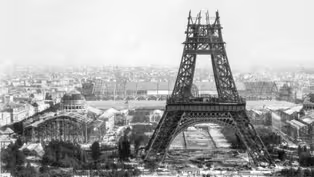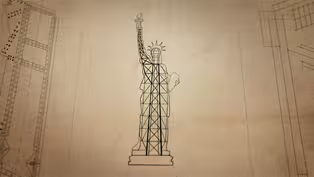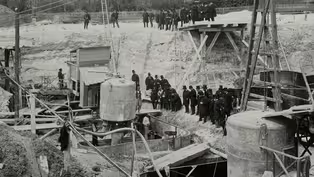
Why is the Eiffel Tower Shaped Like That?
Clip: Season 51 Episode 3 | 1m 58sVideo has Closed Captions
The Eiffel Tower was a completely novel design at the time it was built.
At the time of its construction, the Eiffel Tower was the tallest structure ever built. That meant that the engineers had a key challenge: making sure the structure could survive the wind.
Problems playing video? | Closed Captioning Feedback
Problems playing video? | Closed Captioning Feedback
National Corporate funding for NOVA is provided by Carlisle Companies and Viking Cruises. Major funding for NOVA is provided by the NOVA Science Trust, the Corporation for Public Broadcasting, and PBS viewers.

Why is the Eiffel Tower Shaped Like That?
Clip: Season 51 Episode 3 | 1m 58sVideo has Closed Captions
At the time of its construction, the Eiffel Tower was the tallest structure ever built. That meant that the engineers had a key challenge: making sure the structure could survive the wind.
Problems playing video? | Closed Captioning Feedback
How to Watch NOVA
NOVA is available to stream on pbs.org and the free PBS App, available on iPhone, Apple TV, Android TV, Android smartphones, Amazon Fire TV, Amazon Fire Tablet, Roku, Samsung Smart TV, and Vizio.
Buy Now

NOVA Labs
NOVA Labs is a free digital platform that engages teens and lifelong learners in games and interactives that foster authentic scientific exploration. Participants take part in real-world investigations by visualizing, analyzing, and playing with the same data that scientists use.Providing Support for PBS.org
Learn Moreabout PBS online sponsorship- [Narrator] 1,000 feet tall.
Today, there are countless structures that rise higher, but at the time, 1,000 foot tower made of iron seemed like utter fantasy.
- [Translator] At the time of the Eiffel Tower Project, the highest structure was the Washington Monument, which is half the size of the Eiffel Tower, and built in masonry.
That construction took several decades as the ground underneath kept sinking.
Eiffel's idea was to use a completely different material to switch to metals, which solved the weight issue, but then they faced a new problem, wind.
- [Narrator] As a tapered vertical structure, 1000 feet tall, the design had to withstand variable wind speeds that would change at each level along its height.
Those winds were not well understood, and when calculating the tower's aerodynamics, Eiffel and his engineers only had theory to guide them.
Here, physicist Benoit Roman compares the effects of wind on two models, a straight tower on one side, and the Eiffel Tower on the other.
- [Translator] So here we have a wind speed of 10 miles per hour.
We see very clearly that the straight tower is bending much more than the Eiffel Tower, which shows its higher rigidity and wind resistance, even though they're the same height and have the same quantity of materials.
- [Narrator] So why does the Eiffel Tower resist wind so much more effectively?
Iron is a flexible material, so the great height of the structure makes it vulnerable to large wind forces.
But with this unusual shape, the force of the wind and of the tower's own weight naturally directs the resulting force downward, following the curves of the tower.
- [Translator] This is the best shape imaginable for wind resistance.
It has the elegance of a mathematical solution.
It's truly optimal.
5 things to know about the Eiffel Tower
Video has Closed Captions
Clip: S51 Ep3 | 1m 40s | Did you know that the Eiffel Tower was once red? (1m 40s)
Building the Eiffel Tower Preview
Video has Closed Captions
Preview: S51 Ep3 | 30s | Explore the engineering behind Paris’s iconic landmark, the tallest structure of its time. (30s)
Inside the Construction of the Statue of Liberty
Video has Closed Captions
Clip: S51 Ep3 | 2m 59s | The Statue of Liberty was one of the most innovative engineering feats of it’s time. (2m 59s)
The Mysterious Illness That Befell Eiffel Tower Construction Workers
Video has Closed Captions
Clip: S51 Ep3 | 2m 50s | Building the massive Eiffel tower on the bank of the Seine River posed more than one challenge. (2m 50s)
Providing Support for PBS.org
Learn Moreabout PBS online sponsorship
- Science and Nature

Capturing the splendor of the natural world, from the African plains to the Antarctic ice.

- Science and Nature

Learn how centuries of knowledge helped our ancestors understand the mysteries of space.












Support for PBS provided by:
National Corporate funding for NOVA is provided by Carlisle Companies and Viking Cruises. Major funding for NOVA is provided by the NOVA Science Trust, the Corporation for Public Broadcasting, and PBS viewers.





